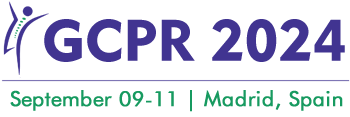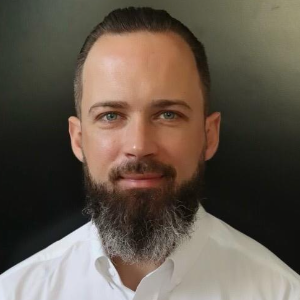Title : Quadriceps activation after anterior cruciate ligament reconstruction: The early bird gets the worm
Abstract:
After Anterior Cruciate Ligament Reconstruction (ACLR), several factors contribute to muscle inhibition, including the surgical procedure and the postoperative phase. Surgery causes neuromuscular alterations. Ligament and tendon structures are altered, which can trigger a protective response from the central nervous system known as reflex inhibition. This phenomenon leads to a reduction in muscle activity.
The postoperative phase is characterized by a reduction in voluntary muscle activity due to pain, inflammation and self-protection (kinesiophobia). These factors combine to produce a reduction in strength, an imbalance in activation and inter- and intramuscular coordination during muscle contractions, which persists over time. The result is morphological changes in the different heads of quadriceps and hamstring muscles.
It is essential to understand this muscle inhibition in the specific context of anterior cruciate ligament injury and reconstruction, as it can compromise rehabilitation and functional recovery. Targeted intervention to alleviate this muscular inhibition becomes crucial to restore muscle strength and promote optimal recovery.
Arthrogenic muscle inhibition (AMI) can occur as early as the initial trauma, although it is more frequently described after ACLR. This is why it is crucial to be able to detect and treat it preoperatively, in order to avoid postoperative complications such as joint stiffness. AMI remains a limiting factor in joint rehabilitation, as the inability to activate the muscle significantly impedes recovery. AMI is a sequential and cumulative neurological process that results in complex clinical impairments. Patients experience changes in afferent joint information, resulting from both spinal and cortical muscle inhibition. This results in somatosensory deficits, neuroplastic compensations in higher brain centers and reduced motor control of the muscle interacting with the joint. Other aspects of clinical function, such as muscle structure and psychological reactions to injury, are also altered and influenced by AMI. Eliminating or reducing AMI should be at the heart of rehabilitation programs to optimize recovery from knee injury or surgery.
It therefore seems important to determine whether or not AMI is present. It is crucial to monitor the progression of voluntary muscle activity, mainly of the quadriceps, using therapeutic strategies established by the physiotherapist. Specifically, patients may present deficits in active knee extension due to lack of activation of the vastus medialis, as well as reflex hypertonia of the hamstrings. In addition to the clinical features mentioned above, Norte et al. include pain, intra-articular effusion and inflammation. Lepley and Lepley highlight the importance of immobilization in neuroplastic changes in the motor cortex. It will also be interesting to objectively assess somatosensory deficits by asking the patient to compare the sensation of quadriceps contraction on the opposite side.
Audience Take Away:
1. Arthrogenic Muscle Inhibition (AMI) Mechanisms and Impact:
- AMI is a reflexive inhibition of musculature surrounding a joint after injury or pathology, affecting neuromuscular control and functional performance.
- After ACL reconstruction, AMI primarily causes a lack of quadriceps activation and strength, complicating rehabilitation and potentially leading to long-term deficits and altered biomechanics.
2. Therapeutic Interventions and Early Management:
- Effective management of AMI includes pain reduction, inflammation control, proprioceptive training, and quadriceps activation.
- Techniques such as neuromuscular electrical stimulation (NMES), biofeedback, and early pain modulation (using ice and compression) are essential for overcoming muscle inhibition and promoting strength gains.
3. Rehabilitation Strategies and Quadriceps Activation Levels:
- Rehabilitation programs must address different levels of quadriceps activation: minimal, adequate, and fast activation.
- Proper classification and targeted interventions can improve patient outcomes, reduce the risk of reinjury, and support a successful return to sports.
4. Central and Peripheral Nervous System Interventions:
- Addressing AMI involves both central (e.g., motor imagery, virtual reality) and peripheral (e.g., NMES, TENS, cryotherapy) interventions to enhance muscle activation and neural drive.
- Emerging techniques like cross-education therapy and vibration training show potential but require further research for conclusive evidence.
5. Comprehensive Multimodal Approach:
- An integrated approach targeting muscles, brain, and nerves is crucial for effective AMI management.
- Continuous evaluation and personalized rehabilitation plans are necessary to optimize functional outcomes, improve quality of life, and ensure a timely return to performance levels after ACL reconstruction.



